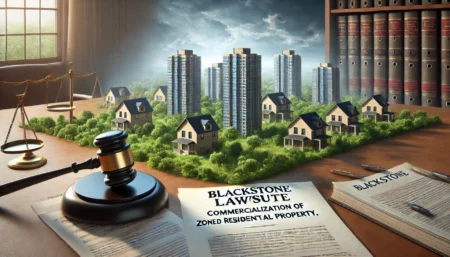Navigating the complexities of asbestos-related claims often raises a significant South Dakota asbestos legal question for many individuals and businesses. In South Dakota, as in other states, the legal landscape surrounding asbestos exposure and its consequences is intricate and highly regulated.
Asbestos, a hazardous material once commonly used in construction and manufacturing, can lead to serious health issues such as mesothelioma and lung cancer. Consequently, understanding your rights and legal options is crucial if you or a loved one has been exposed to asbestos.
This South Dakota asbestos legal question involves determining the best course of action for pursuing compensation and holding responsible parties accountable. Expert legal guidance can help address these concerns and ensure that victims receive the support they need in the face of such challenging circumstances.
Common Concerns in a South Dakota Asbestos Legal Question
When dealing with a South Dakota asbestos legal question, victims often face several concerns:
- Proof of Exposure: Establishing a direct link between asbestos exposure and the disease can be challenging. Accurate documentation of exposure history and medical records is essential.
- Statute of Limitations: Understanding the time limits for filing a claim is critical. South Dakota has specific deadlines that must be met to avoid losing the right to seek compensation.
- Financial Burden: The costs associated with legal proceedings and ongoing medical care can be significant. Victims worry about managing these expenses while pursuing their claims.
- Legal Complexity: The legal process for asbestos-related cases can be intricate and overwhelming. Victims need clear guidance on navigating the legal system.
Navigating the South Dakota Asbestos Legal Question: A Guide for Victims
Steps to navigate the South Dakota asbestos legal question include:
- Consult an Attorney: Begin by seeking legal counsel from an attorney experienced in asbestos litigation. They can provide valuable guidance on your case and the legal options available.
- Gather Documentation: Collect all relevant medical records, employment history, and evidence of asbestos exposure.
- Understand Deadlines: Be aware of the statute of limitations in South Dakota for filing asbestos-related claims. Ensure that all necessary legal actions are taken within these timeframes.
- Prepare for Legal Processes: Work with your attorney to understand the stages of the legal process, including filing claims, discovery, and possible trial proceedings.
Legal Procedures for Addressing a South Dakota Asbestos Legal Question
Addressing a South Dakota asbestos legal question involves several legal procedures:
- Filing a Claim: Initiate the process by filing a claim in the appropriate court. This document outlines the allegations and seeks compensation for damages.
- Discovery Phase: Both sides communicate case-related data and supporting documentation. This phase includes the collection of documents and depositions from witnesses.
- Settlement Negotiations: Before going to trial, there may be efforts to reach a settlement agreement. Negotiations aim to resolve the case without further litigation.
- Trial: If a settlement cannot be reached, the case proceeds to trial where a judge or jury will make a determination based on the evidence presented.
Chart of the Table:
| Legal Procedure | Description |
| Filing a Claim | Submit a formal claim to the court outlining the case. |
| Discovery Phase | Exchange evidence and information between parties. |
| Settlement Negotiations | Attempt to reach a financial agreement outside of court. |
| Trial | Court proceedings if a settlement is not reached. |
South Dakota Asbestos Legal Question: Understanding Compensation Options
Compensation options for asbestos-related claims in South Dakota include:
- Personal Injury Lawsuits: Victims can file lawsuits seeking damages for medical expenses, lost wages, and pain and suffering resulting from asbestos exposure.
- Workers’ Compensation: If the exposure occurred during employment, workers’ compensation benefits may be available to cover medical costs and lost income.
- Asbestos Trust Funds: Established by bankrupt asbestos companies, these funds provide compensation to victims without the need for a lawsuit.
The Role of Evidence in a South Dakota Asbestos Legal Question
Evidence is crucial in a South Dakota asbestos legal question, including:
- Medical Records: Detailed records of diagnosis and treatment for asbestos-related diseases help establish the impact of exposure.
- Exposure Documentation: Proof of asbestos exposure, such as employment history and industry-specific information, is necessary to link exposure to the disease.
- Expert Testimony: Testimonies from medical and industrial hygiene experts can provide insight into the connection between exposure and health effects.
Chart of the Table:
| Type of Evidence | Purpose |
| Medical Records | Demonstrate diagnosis and treatment. |
| Exposure Documentation | Establish a link between exposure and disease. |
| Expert Testimony | Provide professional opinions on exposure and health impacts. |
How Statutes of Limitation Affect the South Dakota Asbestos Legal Question
Statutes of limitation are critical in the South Dakota asbestos legal question, as they define the time frames within which a claim must be filed. In South Dakota, the statute of limitations for personal injury claims related to asbestos exposure typically starts from the date when the disease is diagnosed or when the victim becomes aware of the connection between their illness and asbestos exposure.
Generally, the limitation period is three years, but it can vary depending on specific case details and the type of claim. Missing these deadlines can result in losing the right to pursue compensation, making it essential for victims to act promptly and seek legal advice to ensure compliance with these time limits.
Bullet Points:
- Diagnosis Date: The clock starts when the disease is diagnosed or when the connection to asbestos exposure is realized.
- Statute Duration: Typically three years in South Dakota.
- Claim Type: Different types of claims (personal injury, wrongful death) may have varying deadlines.
- Legal Advice: Seek legal counsel to understand and meet the applicable deadlines.
Finding Expert Legal Help for a South Dakota Asbestos Legal Question
Securing expert legal help is crucial when navigating a South Dakota asbestos legal question. Finding a lawyer with expertise in asbestos litigation ensures that victims receive knowledgeable and effective representation.
Key steps include researching attorneys with a track record in handling asbestos cases, verifying their familiarity with South Dakota’s legal framework, and reviewing client testimonials or case results. An experienced attorney can provide critical insights into the legal process, assist with gathering necessary evidence, and help formulate a strategy for pursuing compensation.
Bullet Points:
- Research: Identify attorneys specializing in asbestos litigation.
- Verify Experience: Ensure the lawyer has a proven track record in similar cases.
- Client Testimonials: Review feedback from previous clients.
- Consultation: Schedule initial meetings to discuss your case and assess compatibility.
Impact of Recent Legislation on South Dakota Asbestos Legal Question
Recent legislation can significantly affect the South Dakota asbestos legal question by altering legal procedures, compensation structures, or claims processes. New laws might introduce changes such as adjusted statutes of limitations, revised requirements for proving exposure, or updates to compensation mechanisms like asbestos trust funds. Staying informed about these legislative changes is crucial for victims and their attorneys to adapt their strategies accordingly and take advantage of any new protections or benefits that may be available.
Chart of the Table:
| Legislative Change | Potential Impact |
| Revised Statutes of Limitations | Changes to the time frame for filing claims. |
| New Proof Requirements | Additional evidence or documentation is needed to prove exposure. |
| Updated Compensation Mechanisms | Changes in how damages are calculated or distributed. |
South Dakota Asbestos Legal Question: The Process of Filing a Lawsuit
Filing a lawsuit related to a South Dakota asbestos legal question involves several key steps. The process begins with consulting an attorney to evaluate the merits of the case and gather essential documentation, including medical records and evidence of asbestos exposure.
Following this, a formal complaint is filed with the court, outlining the allegations and seeking damages. The case then moves into the discovery phase, where both parties exchange evidence and information. Settlement negotiations may occur to resolve the case without a trial. If no settlement is reached, the case proceeds to trial, where a judge or jury will make a final decision.
Chart of the Table:
| Filing Process Step | Description |
| Consultation | Meet with an attorney to assess your case. |
| Complaint Filing | Submit a formal complaint to the court. |
| Discovery Phase | Exchange of evidence and information between parties. |
| Settlement Negotiations | Attempt to reach a resolution outside of court. |
| Trial | Court proceedings if a settlement is not achieved. |
Settlement vs. Trial: Deciding the Best Approach for a South Dakota Asbestos Legal Question
Deciding between settlement and trial is a crucial aspect of the South Dakota asbestos legal question. Settling a case can provide a quicker resolution and financial compensation without the uncertainty and extended duration of a trial. Settlements often involve negotiating a lump sum payment to resolve the case. Conversely, going to trial might be necessary if a fair settlement cannot be reached or if the victim seeks a potentially larger award. Factors influencing this decision include the strength of the evidence, the severity of the illness, and the likelihood of a favorable verdict.
Bullet Points:
- Settlement Benefits: Faster resolution, immediate compensation.
- Trial Benefits: Potential for a higher award, legal precedent.
- Decision Factors: Evidence strength, case complexity, personal preferences.
Common Defenses in South Dakota Asbestos Legal Question Cases
Defendants in South Dakota asbestos legal question cases may raise several common defenses to challenge the claims:
- Causation: Arguing that the disease was not caused by asbestos exposure or that the exposure levels were insufficient to cause the illness.
- Statute of Limitations: Claiming that the lawsuit was filed after the legal deadline had passed.
- Credibility of Evidence: Contesting the accuracy or reliability of the evidence presented by the plaintiff.
- Alternative Causes: Suggesting that other factors or pre-existing conditions contributed to the illness.
Chart of the Table:
| Defense | Description |
| Causation | Disputes the link between exposure and disease. |
| Statute of Limitations | Claims the case is barred due to expired filing period. |
| Credibility of Evidence | Challenges the accuracy or reliability of the evidence. |
| Alternative Causes | Argues that other factors contributed to the disease. |
Role of Occupational History in a South Dakota Asbestos Legal Question
Occupational history is pivotal in the South Dakota asbestos legal question. Establishing a connection between a person’s job history and asbestos exposure is essential for proving liability. Detailed records of employment, including job roles, duration at companies known for asbestos use, and any safety practices, help build a strong case.
Testimonies from former colleagues or experts who can attest to typical exposure levels in specific industries further support the claim. Accurate and comprehensive occupational history documentation is key to demonstrating how exposure contributed to the development of asbestos-related diseases.
Bullet Points:
- Employment Records: Detailed records of job roles and companies.
- Exposure Evidence: Documentation of asbestos use in the workplace.
- Testimonies: Statements from former colleagues or industry experts.
- Safety Practices: Information on safety measures in place at the time of employment.
Long-Term Implications of a South Dakota Asbestos Legal Question for Families
The long-term implications of a South Dakota asbestos legal question for families are significant and multifaceted. Victims of asbestos-related diseases often face ongoing medical treatment, which can impose substantial financial burdens on families.
The emotional and psychological toll of dealing with a severe illness can affect family dynamics and overall well-being. Additionally, families may experience financial strain due to lost income and high medical expenses, which can persist long after the legal case is resolved. Ensuring adequate compensation and support can help alleviate some of these challenges, but the impact on families can be profound and enduring.
Frequently Asked Questions (FAQs)
What is the statute of limitations for filing an asbestos claim in South Dakota?
In South Dakota, the statute of limitations for personal injury claims related to asbestos exposure is typically three years from the date the disease is diagnosed or from when the victim becomes aware of the connection between their illness and asbestos exposure. It is crucial to adhere to this timeframe to maintain the right to seek compensation.
How can I prove asbestos exposure for my South Dakota asbestos legal question?
To prove asbestos exposure, you will need to provide comprehensive documentation such as employment records, safety reports, and medical records that demonstrate your exposure to asbestos. Testimonies from former coworkers or experts in occupational health can also be instrumental in linking your illness to asbestos exposure.
What types of compensation are available for asbestos-related claims in South Dakota?
Compensation for asbestos-related claims can be sought through personal injury lawsuits, workers’ compensation claims, or asbestos trust funds. Potential damages may cover medical expenses, lost wages, pain and suffering, and other related losses.
How do I find an attorney for a South Dakota asbestos legal question?
To find an attorney for an asbestos legal question, search for those specializing in asbestos litigation with a strong track record in similar cases. Look into their past case results, read client reviews, and schedule consultations to discuss your case and evaluate their expertise.
What should I do if I missed the statute of limitations for filing my asbestos claim?
If you have missed the statute of limitations, consult with an attorney to explore alternative options. These may include filing a claim with asbestos trust funds or other legal remedies that might still be available despite the expiration of the traditional statute of limitations.
What is the process of filing an asbestos lawsuit in South Dakota?
Filing an asbestos lawsuit involves several steps: consulting with an attorney, gathering necessary evidence and documentation, filing a formal complaint with the court, participating in the discovery phase where evidence is exchanged, and engaging in settlement negotiations. If a settlement cannot be reached, the case will proceed to trial.
Can I receive compensation through an asbestos trust fund in South Dakota?
Yes, if the responsible asbestos companies have established bankruptcy trust funds, you may be eligible for compensation through these funds. You will need to file a claim with the trust, providing evidence of your exposure and illness to receive compensation.
What are common defenses used in South Dakota asbestos legal cases?
Common defenses in asbestos cases may include disputing the causation of the disease, arguing that the statute of limitations has expired, questioning the credibility of the evidence provided, and suggesting other factors or pre-existing conditions contributed to the illness.
How does recent legislation impact asbestos legal claims in South Dakota?
Recent legislation may affect asbestos legal claims by introducing changes to filing procedures, compensation structures, or proof requirements. It is important to stay updated on legislative changes to adapt your legal strategy accordingly and benefit from any new provisions or protections.
What role does occupational history play in a South Dakota asbestos legal question?
Occupational history is vital in asbestos legal cases as it helps establish the connection between your job and asbestos exposure. Detailed records of your employment, job roles, and exposure levels at specific companies are necessary to prove liability and the direct link between your exposure and the asbestos-related illness.




